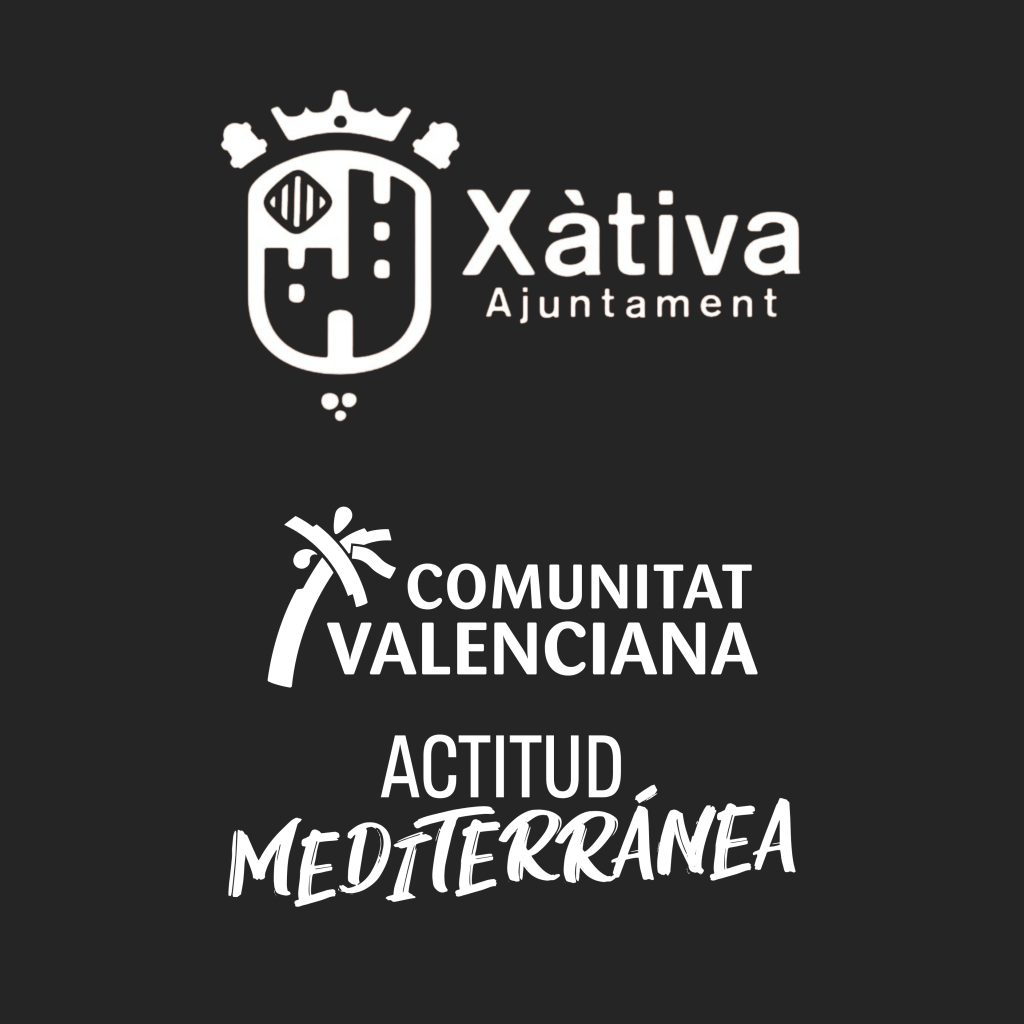ROOTS AND CULTURE
Streets and squares stage spirited festivals
ROOTS AND CULTURE
Streets and squares stage spirited festivals
Xàtiva’s festivals are one of the clearest symbols of the city’s identity. Its cultural legacy is extraordinarily popular, rich and diverse and, in some cases, stretches back to very ancient times, making the local festivals one of the indisputable main attractions of the city.
The city fair, or Fira de Xàtiva, has been celebrated since the year 1250. The Corpus Christi procession is one of the oldest in the Region of Valencia. Add to these the Semana Santa or Holy Week celebrations, and the iconic festivities of Las Fallas, and you have an amazing annual programme of festive events made possible thanks to the participation and dedication of the local population. To wander the streets and squares of Xàtiva during one of these festivals is an unforgettable experience, a real treat for tourists and residents alike.
Fira de Xàtiva
The Fira de Xàtiva, the city fair held in August, was first celebrated by special decree from King Jaume I in 1250. For several days, the city is transformed into the local party capital, its streets awash with revellers from near and far. The opening and closing ceremonies in particular are spectacular events sparkling with light and life.
For five days from 15th to 20th August, the city’s streets and squares are filled with fairground attractions, market stalls and cultural activities, with the original motive for the fair – livestock – now relegated to the background. Highlights among the many activities on the programme include a draft horse competition known as tiro y arrastre, which was introduced in the 1970s, a night on which traditional albaes are sung, a classic motorcycling tournament, a series of children’s shows, and the resurrected festival of song, El Festival de la Cançó.
The Corpus Christi Procession
The Xàtiva Corpus Christi procession in the month of June is a combination of the religious and the profane, a solemn yet striking affair that embraces numerous elements of popular culture, most of which have their own dance.
First documented in the 14th century, it is one of the oldest Corpus processions in the Region of Valencia, but it was in the 1980s that efforts were truly made to restore its importance and return it to the splendour it enjoys nowadays. Schoolchildren spend weeks practising the traditional dances, which include the dance of the giants and bigheads (gigantes y cabezudos), the labourers’ dance (labradores), the dances of els arquets, els cavallets and la magrana, and the classic moma, which portrays the battle between good and evil. On the religious front, numerous characters from the Bible march in the procession, representing biblical scenes. Another major element is the enramada, in which the local residents scatter herbs onto the streets in advance of the procession, creating an aromatic green carpet for the occasion.
Fallas
The spectacular festival of Las Fallas has a long-standing history in Xátiva. The first monument to be burnt as part of Las Fallas was erected on Plaça de la Trinitat in 1865, making Xátiva the first city after Valencia to celebrate this festival. The local version has been officially declared an Asset of Cultural Interest and has been nominated for inclusion on the UNESCO list of Intangible Cultural Heritage.
These days 19 fallas monuments are erected, alongside their corresponding children’s versions, satirising current affairs. The fallas are also accompanied by annual publications known as llibrets fallers, a long-standing tradition and genuine reflection of the ever-evolving social facet of the festival. The celebrations then intensify across Las Fallas week to culminate on 19th March, El Día de San José or St Joseph’s Day. These are days for street life, full of music and fireworks. On the morning of the 19th the monuments are paraded through the streets in an event known as La Baixada de Sant Josep. Then, that night, the celebrations climax with La Cremá, the spectacular and symbolic burning of the fallas. And then work immediately begins on the long preparations for next year’s celebrations…
Semana Santa
Semana Santa in Xàtiva is one of the biggest and oldest Holy Week festivals in the Region of Valencia. Dating back to the late Middle Ages, it sees the participation of 16 brotherhoods, who come from all around to parade their images and icons – with pieces that date back to the 17th and 18th centuries, and pieces attributed to esteemed Valencian sculptor José Esteve Bonet.
During Semana Santa the city streets are crowded with spectators come to observe the strikingly solemn processions rich in historical, artistic and religious heritage. One of the most renowned processions is Les Cortesies or The Encounter, which is held opposite the Church of Sant Francesc on Easter Wednesday and features the figures of the Ecce-Homo and Nuestra Señora de la Soledad.
Musical Societies
Music is one of the most deep-rooted arts in the Region of Valencia and a cornerstone of collective identity – and in Xàtiva there is no exception. Music is lived intensely here throughout the year, and is an integral part of the local festivals – no event of any nature is complete without its accompanying soundtrack. There are two highly accomplished musical societies in Xàtiva: La Primitiva Setabense and La Nova de Xàtiva. The former is known as La Vella or “The Old One”, and the latter named La Nova or “The New One”, but both boast over 100 years of history and are based at the Gran Teatre, where they perform concerts on a regular basis.



